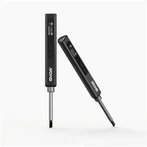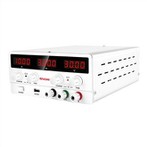Detailed explanation of linear regulated power supply operation
The linear stabilized power supply referred to here refers to a DC stabilized power supply in which the regulating tube operates in a linear state. Adjusting the tube to work in a linear state can be understood as follows: RW (see analysis below) is continuously variable, that is, linear. In switch mode power supplies, however, it is different. The switching tube (in switch mode power supplies, we usually refer to the adjustment tube as the switching tube) works in two states: on - with very low resistance; Off - the resistance is very high. The tube working in the on/off state is obviously not in a linear state.
Linear stabilized power supply is a type of DC stabilized power supply that was used relatively early. The characteristics of a linear regulated DC power supply are: the output voltage is lower than the input voltage; Fast response speed and small output ripple; Low noise generated by work; Low efficiency (LDO, which is often seen nowadays, is designed to solve efficiency problems); High heat generation, especially from high-power power sources, indirectly adds thermal noise to the system.
Working principle: Let's first use the following diagram to illustrate the principle of regulating voltage in a linear regulator power supply.
As shown in the following figure, the variable resistor RW and the load resistor RL form a voltage divider circuit, and the output voltage is:
Uo=Ui × RL/(RW+RL), so by adjusting the size of RW, the output voltage can be changed. Please note that in this equation, if we only look at the change in the value of the adjustable resistor RW, the output of Uo is not linear, but if we look at RW and RL together, it is linear. Also note that our diagram does not depict the RW's lead end as connected to the left, but rather on the right. Although there is no significant difference from the formula, the drawing on the right perfectly reflects the concepts of "sampling" and "feedback" - in reality, the vast majority of power supplies work in sampling and feedback mode, and feedforward methods are rarely used or only used as auxiliary methods.
Let's continue: if we replace the variable resistor in the diagram with a transistor or field-effect transistor, and control the resistance of this "variable resistor" by detecting the output voltage to maintain a constant output voltage, we will achieve the goal of voltage stabilization. This transistor or field-effect transistor is used to adjust the voltage output size, so it is called an adjusting transistor.






